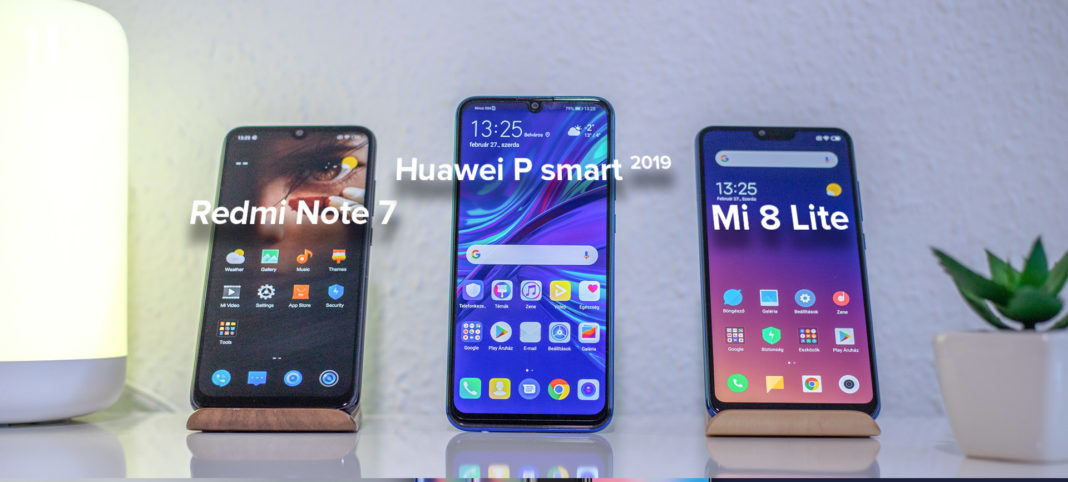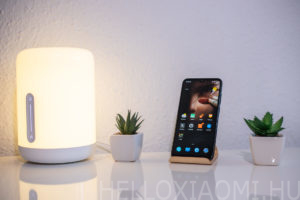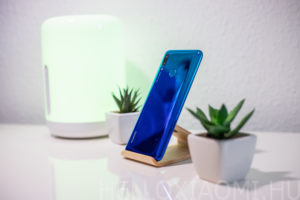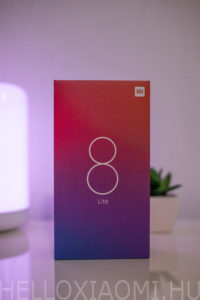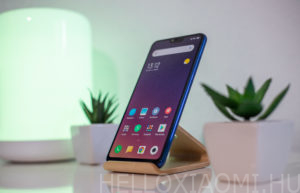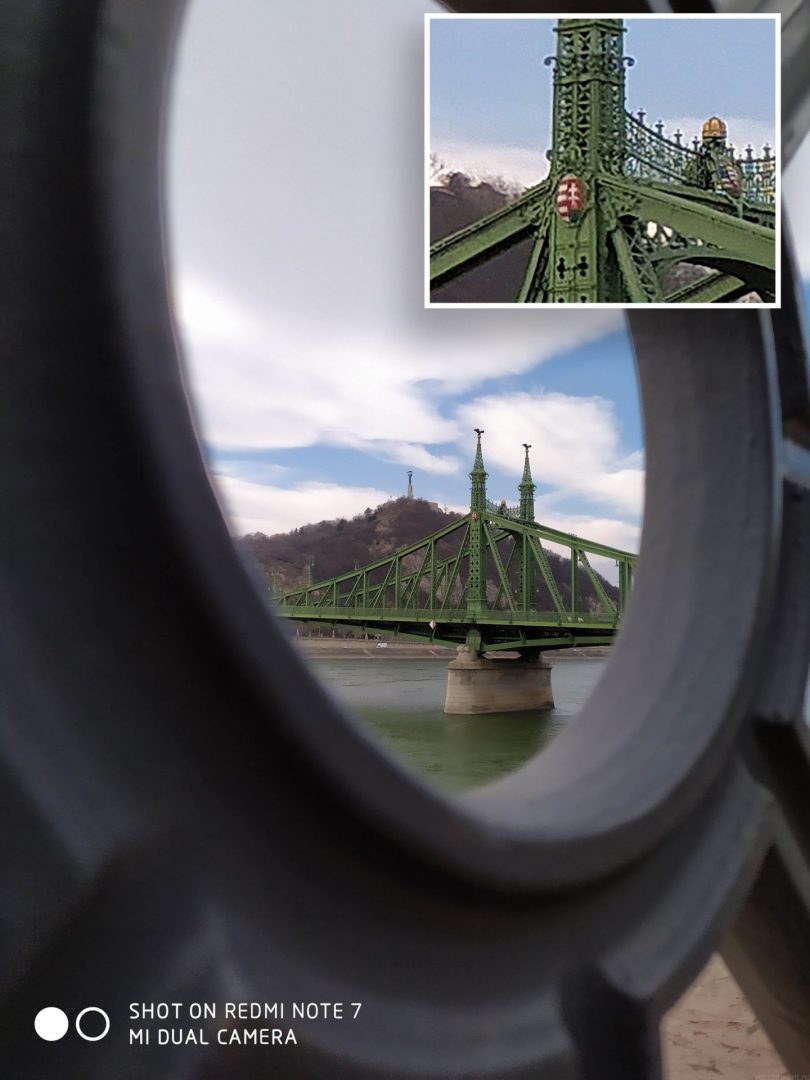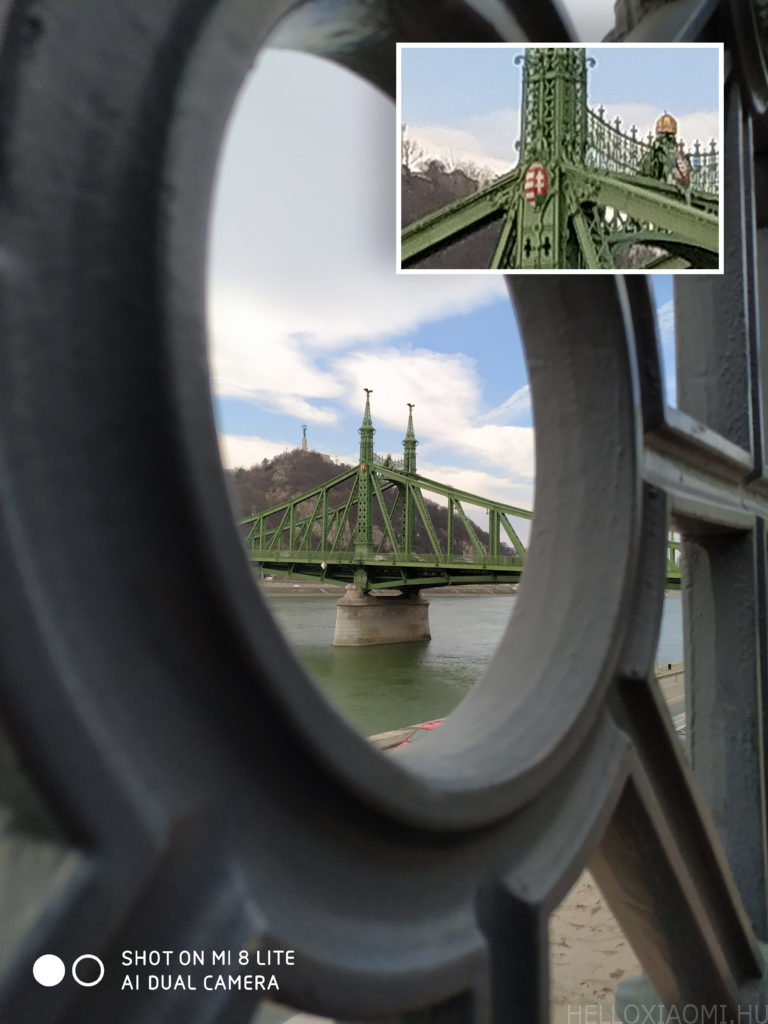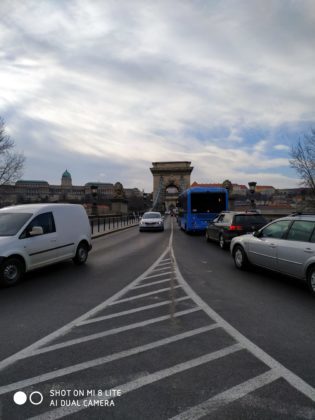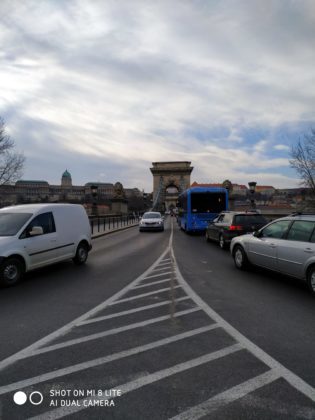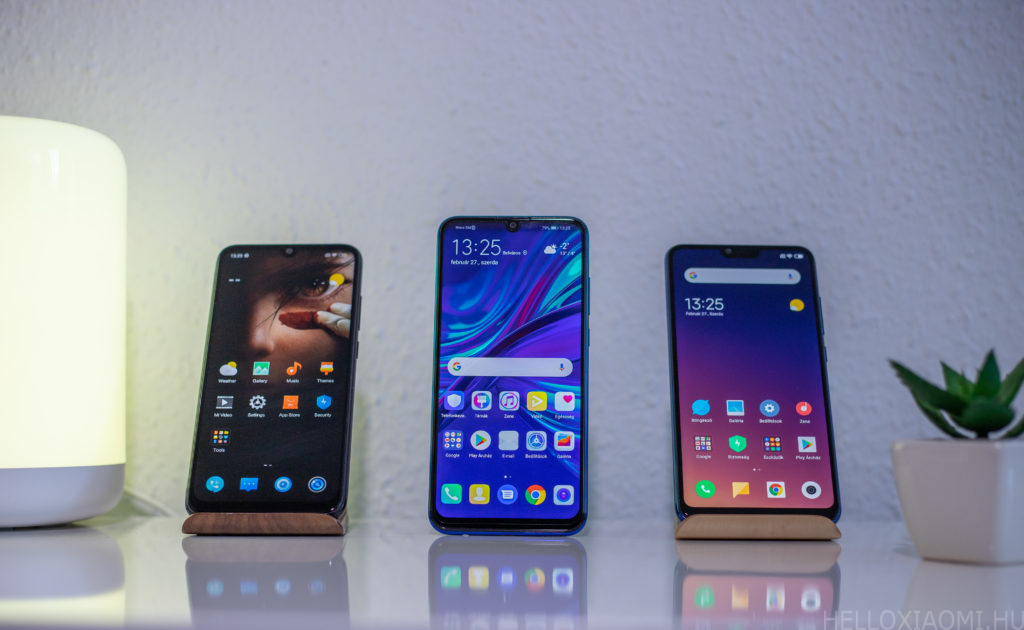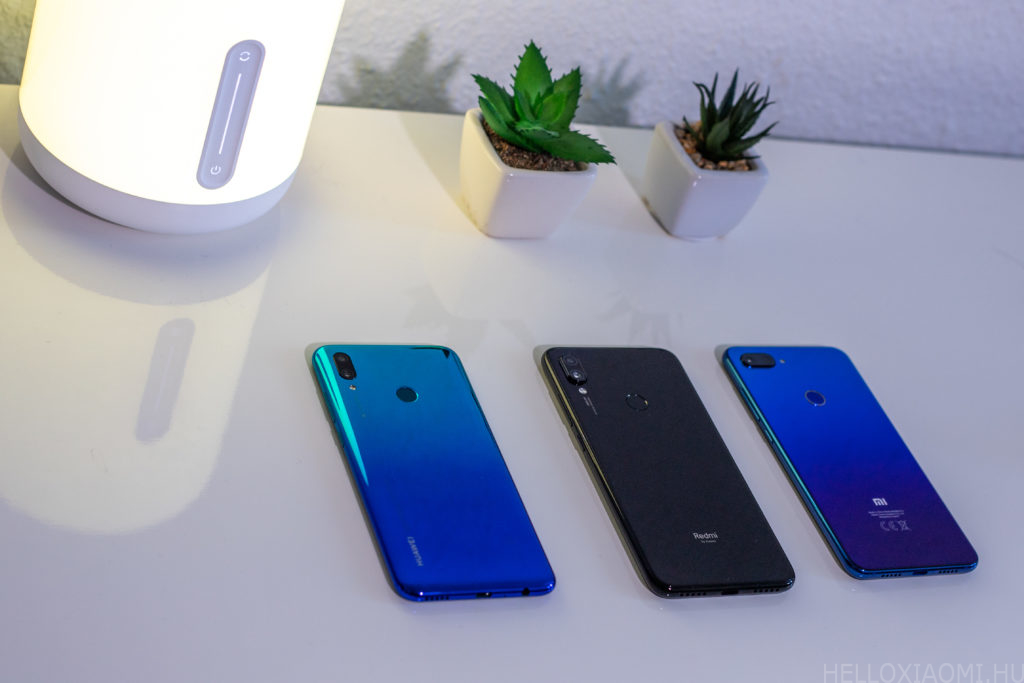Our editorial team looks forward to new opportunities in 2019. After several successful negotiations, we will be able to look at devices from other brands and compare them with Xiaomi products within the category. The first of these comparisons is with the Redmi Note 7-is compared to the Huawei P smart 2019-and see how far technology has come since the Mi 8 Lite since its launch.
 We won't go too far into the comparison, instrumental measurement is not an option, we can only rely on our own senses. That's why we won't go into the benchmark scores, because all three devices are at roughly the same performance level.
We won't go too far into the comparison, instrumental measurement is not an option, we can only rely on our own senses. That's why we won't go into the benchmark scores, because all three devices are at roughly the same performance level.
Not only is the mid-range category the most popular in the global market, Xiaomi is also very strong in this category in both the Chinese and Indian markets. Our country is no different, with the Redmi model range being by far the most popular in its price category in Hungary as well. Not by chance, since for years - with similar hardware - the competition could not compete in price and build quality (as well as software support). In the last few years, however, Huawei/Honor has been competing with the Redmi series in this segment with a very powerful offer. Our current test subjects offer an alternative at a similar price and with almost identical performance for those who plan to buy a smartphone for 2-4 years and don't want to spend a higher amount. Huawei's work is made much easier by the service instalment option, as well as dozens of online and technical store sales.
Let's see what the mid-range trio has to offer in 2019.
Design
Redmi Note 7
We managed to get our hands on the Redmi Note 7 before the Global version was released, so this test was done with it. However, there is no difference, the Chinese stable ROM is even better than the first Global stable ROMs in terms of camera.
The first standalone model from the early January separation sets a new trend, with the addition of Type-C connectivity, a quality dual main camera and fast charging, which comes in handy with the 4000mAh battery.
The polished plastic frame, which looks like metal but is actually plastic, gives a rugged feel, while the glass (Gorilla Glass 5) front and back give a quality look and feel. Light weight and adequate rigidity were important considerations when designing the phone. This has been achieved, with a shock-absorbing zone at the corners to cushion the impact damage in the event of a drop. While a metal frame will deform and break the display if dropped, the flexible plastic frame will only leave a scratch mark on the paintwork.
This is where I would like to talk about bendability. Although the Note 7 is shown bending in two on the video sharing site, in reality there is no such design flaw. Obviously you can bend almost anything with muscle, but in normal life situations there is no chance of that. I have tried all three devices, and the two Xiaomi devices are massively resistant to the impact. However, due to the large surface area, wearing either XS "skinny" jeans with side pockets or back pockets is not recommended. On the one hand, without a case, you can quickly find it on the floor of the restroom, and on the other hand, the Gorilla Glass is not unbreakable under stress.
With the Redmi Note 7, it's the size you'll have to deal with the most, especially if you're holding it after its predecessor, the Redmi 6. For those with average hands, using it without changing grip is impossible. Let's say the same is true for all three models. The polished frame and the glossy glass back make the use of a silicone case, which is a must for Xiaomi phones, prone to slipping. The asymmetrical positioning of the camera unit means that it wobbles on the table when "bare" anyway, unless you hold it in your hand.
The case is symmetrical at the bottom, with a 5-5 hole speaker and microphone grille on both sides (left for the microphone, right for the mono speaker) and the Type-C connector in the middle, which is insulated according to the factory specifications, so it's likely to protect the phone from splashing water. On the right, at the top, is the volume button pair, with the power button below. On the top right is the hybrid SIM tray, which can hold either 2 nano SIM cards or a nano SIM and a microSD card. Both the SIM tray and the speaker are sealed, so you can almost guarantee drop resistance. On the top, from left to right, you'll find the infra port, the 3.5mm jack and the noise-cancelling microphone. The 2.5D rounding is elegant, but the grip of the phone is not as comfortable as on the Mi 8. The 6.3″ display makes it taller than the Mi 8, but also taller than the other two members of the trio. In terms of weight, it's still within the acceptable range, with 186g suggesting a quality use of materials. In its defence, it has a large battery and adequate stiffening.
Huawei P smart 2019
The most comfortable member of the trio. The full-screen design is coupled with narrow bezels, with rounded corners that are just as comfortable as on Xiaomi models. The bottom bezel is narrower than the other two models, with a 6.21″ display size, making it the smallest member of the trio in terms of overall physical size too. The small sensor island in the middle of the display is not distracting, hiding an 8 MP selfie camera. It's a small detail, but the P smart even uses a colour notification LED at the bottom of the display. The Redmi Note 7 has a similar LED at the bottom, but now only in white, while the Mi 8 Lite has a tiny white LED at the top, right in the middle.
The weakest point of the P smart 2019 is clearly the back. The lacquered colour-transition paint (aurora blue) looks good from a distance, but closer up you can see the tiny scratches that can collect on the unprotected plastic over days. The situation isn't helped by the fact that no silicone case is included from the factory, which would extend the scratch-free life of the back cover by months. The weight of the device is very pleasant. The airy weight of 160 grams makes for a very comfortable grip, you can hold it for hours without wanting to put it down. It's so thin, rounded and light that it almost disappears in a pocket. The plastic backing and light weight also means that the material damage from dropping it can be less than with the two heavier competing models with glass covers.
Huawei's engineers didn't aim for symmetry, with the SIM tray on the top, the mono speaker on the bottom right and the 3.5mm jack on the right, with a standard microphone earpiece and a record button inside the box. The quality is good enough for phone conversations and podcasts, but for music you'll want something a bit more serious. Coming back to the back, I have to mention one more little thing. The rear dual-camera unit of the P smart 2019 is the least protruding from the plane of the back. So it doesn't wobble on the table without a case.
Mi 8 Lite
It's mid-range in size, smaller and thinner than the Redmi Note 7. It only surpasses it in width. In weight, it's 9 grams heavier than the P smart, despite the metal frame and glass back. The battery may be the biggest extra weight with the Redmi Note 7, making it 17 grams heavier than the Mi 8 Lite.
Similar in name only to the Mi 8, it has the same Gorilla Glass 5 glass front and back as the Redmi Note 7, with the same stiffness and metal frame that will give some peace of mind. The Mi 8 Lite, also in Aurora Blue, has a different colour scheme to the P smart, which I find more tasteful. The repositioning of the dual camera on the back to a horizontal position is inexplicable, as all Xiaomi phones launched in the last 2 years, except the Redmi 6/6A, have had a vertical position (first used on the iPhone X).
The top of the device - unlike the Redmi Note 7 - lacks both the infra and the 3.5mm jack.
Hardware
The Redmi Note 7 and Mi 8 Lite both have the same Qualcomm Snapdragon 660 AIE processor, with an increased clock speed, which is strong enough for everyday use and gaming. A Huawei P smart 2019 with in-house developed HiSilicon KIRIN 710 processor show nearly identical scores in the AnTuTu benchmark test. The GPU frequency paired with it is capable of a higher clock speed on paper, and it also has Turbo mode. I've summarised the parameters in the table below, so you can roughly see that there are no significant differences between the three devices, apart from minor differences. The Mi 8 Lite doesn't have a 3.5mm jack, nor does it have infrared, nor does it have an FM radio. It does, however, have the most serious camera unit of the trio, both front and rear. The Redmi Note 7's 48MP camera is useless if it's solved by pixel stacking with a Samsung sensor. The advantage of the Redmi Note 7's camera can only outperform the Mi 8 Lite in ideal lighting conditions, which I will illustrate below.
Huawei has been quite secretive about the specifications, some of the details have not been made public. Judging by the quality of the images, they either use OV or Samsung, or possibly other suppliers.
Huawei has done a good job of picking its components to stay competitive on price, and compensates for minor shortcomings elsewhere.
What do I mean? Although the plastic back is only appealing at first, it scratches easily, it's lightweight and well weighted. There's no USB-C connector and the microUSB doesn't come with fast charging support. But you do get NFC, earbuds, and a configurable EMUI system with extra power-saving mode. More on that below.
| Redmi Note 7 | Huawei P smart 2019 | Mi 8 Lite | |
| Dimensions | 75,21 x 159,21 x 8,1 mm | 73,4 x 155,2 x 7,95 mm | 75,8 x 156,4 x 7,5 mm |
| Weight | 186g | 160g | 169g |
| Display size, aspect ratio, resolution, brightness | 6.3″ IPS | 6.21″ IPS, | 6.26″ IPS |
| 19,5:9 2340×1080 | 19,5:9, 2340×1080 | 19:9 2280×1080 | |
| 450 nit | 400 nit | 450 nit | |
| Display protection | Gorilla Glass 5 | na. | Gorilla Glass 5 |
| Processor type | Qualcomm Snapdragon 660AIE eight-core, max 2.2GHz, 14nm / 64 bit | Huawei HiSilicon KIRIN 710 eight-core, 2.2GHz, 12nm / 64 bit | Qualcomm Snapdragon 660AIE eight-core, max 2.2GHz, 14nm / 64 bit |
| GPU type | Adreno 512, max. 650 MHz | ARM Mali-G51 MP4, max 1000 MHz | Adreno 512, max. 650 MHz |
| RAM type | LPDDR4x | na. | LPDDR4x |
| back-up storage type | EMMC 5.1 | na. | EMMC 5.1 |
| Main camera sensors | 48MP Samsung S5KGM1 ISOCELL (4-in-1 piexel), 1.6µm, f/1.8
5MP Samsung S5K5E8, 1.12µm |
13MP f/1.8 2MP |
12MP Sony IMX363 Exmor RS, 1.4µm, f/1.9 dual pixel AF 5MP Samsung SAMSUNG S5K5E8, 1.12μm |
| Front camera sensor | 13MP Omnivision OV13855, 1.12µm, f/2.2 | 8MP f/2.0 unknown manufacturer | 24MP Sony IMX 576 Exmor RS, 4-in-1, 1.8µm, f/2.0 |
| Video resolution | 1080p@60fps, 1080p@30fps, 1080p/720p@30 - EIS, 1080p/720p @120fps | 1080p@60fps, 1080p@30fps, 4K@30fps, 1080p/720p@30 - EIS, 1080p/720p @120fps | 1080p@60fps, 1080p@30fps, 4K@30fps, 1080p/720p@30 - EIS, 1080p/720p @120fps |
| SIM socket | hybrid, 2 nano SIM or 1 nano SIM and 1 microSD | hybrid, 2 nano SIM or 1 nano SIM and 1 microSD | hybrid, 2 nano SIM or 1 nano SIM and 1 microSD |
| Bluetooth | 5.0 | 4.2 | 5.0 |
| use of materials | glass, plastic | glass, plastic | glass, metal |
| Battery | 4000mAh | 3400 mAh | 3350mAh |
| Fast charging | van, QC 4.0 | none | van, QC 3.0 |
| USB interface | Type-C | Micro USB | Type-C |
| NFC | none | is | none |
| Audio jack | 3.5mm is | 3.5mm is | none |
| GPS | GPS, AGPS, GLONASS, Beidou | GPS, AGPS, GLONASS, Beidou | GPS, AGPS, Glonass |
| FM radio | is | is | none |
| Infrastructure | is | none | none |
| UI | MIUI10 | EMUI 9.0 | MIUI10 |
| Android version | Android 9 | Android 9 | Android 9 |
| Box contents | charging head, Type-C cable, SIM pin, silicone case | charging head, Micro USB cable, SIM pin, earphone | charging head, Type-C cable, SIM pin, silicone case, Type-C to 3.5mm jack adapter |
Looking at the quality of the speakers, I didn't notice a huge difference. The Redmi Note 7 is new, larger sound cavity design and special Smart Pa system but undeniably well done. It doesn't distort at higher volumes, and it delivers a fuller sound than the other two phones. I can't compare it to previous Redmi models, but this is probably the best sounding Redmi the manufacturer has ever made.
Display
All three phones use LTPS technology IPS panels with FHD+ resolution. Due to its size, the P smart 2019 has the highest pixel density of 415ppi, while the Redmi Note 7 has 409ppi and the Mi 8 Lite has 403ppi.
The viewing angle is nearly identical, colour calibration is possible for all of them, as "Reader modeeach of them also received a "t". The P smart 2019 is less visible in daylight due to its slightly lower brightness, although Daylight modein the settings. The protection for the two Xiaomi devices is GG5, while for Huawei it is not specified. There is a reason why the manufacturer's film is tastefully applied to the glass.
While Huawei's product page highlights the TÜV certificate for the display, Xiaomi only mentions it on the Redmi 7. The centrally placed drop notch is not distracting on the P smart and Redmi Note 7, while the Mi 8 Lite uses a wider sensor island, still in line with the 2018 trend.
UI
Xiaomi - MIUI10
Xiaomi started with this proprietary system 9 years ago. MIUI is now the most popular Android-based user interface with over 200 million active users. Read more by clicking here you can read. MIUI took visual solutions from iOS back in the day, and over the years they've borrowed and transplanted the visuals they liked into their own system. The settings, themes and customisation are constantly changing and modernising. In the last 5 years, the interface of several leading manufacturers has undergone spectacular development. But there is no system on the market as well optimised and clean as MIUI. You can argue here whether Samsung's One UI, Huawei's EMUI or OnePlus' is better, but the majority (who have used it) clearly vote for MIUI. They have taken out a lot of settings that I miss, but you can get used to it. If MIUI10 isn't enough for you, you can add a custom laucher, if checked by the manufacturer. Fortunately, custom applications are not a burden on system speed or memory. And they don't take up 20GB of back space, like some well-known manufacturers' systems did a few years ago.
The MIUI own calculator application we really like, the currency and other converter is very useful in our work too.
The Mi Drop makes it easy to share large files between two devices, but also provides an efficient solution for copying complete applications.
The Scanner can also be used to scan QR codes or barcodes, or even digitise documents. Fortunately, it's also integrated into the MIUI camera, making it quicker to access a link or app by code, for example.
I could write a separate post about my own applications, because I use almost all of them. For years I used my own E-mail app, to date I use the Calendarat, a File Managerand the Noteset.
The notification bar, the fast switches or the much criticised Fast track cards can be customised or, in the case of the latter, switched off. Settings has changed a lot, either by adding new features or, on the contrary, by removing useful options. For me, it's clearer than EMUI, and for a novice user it's not as complicated as Huawei's system. Different developer versions include extra features or you may encounter translation differences. I can say that Global stable ROMs have never been my favourite, I have not tolerated them for more than a few weeks on any device I have used. In the case of my Mi 3, it was the MIUIHU roms, while in the case of the Mi 8, Mi 8 Pro, or now the Mi 9, I found my computation with the Global developer roms. The EU multi ROMs aren't bad either, but as was the case with the Mi 8 SE, fatal bugs can slip in, and they are a bit slow to fix them these days. But these ruins help the European rollout of Xiaomi devices like the Mi Pad series, for example.
From MIUI 10, software facial recognition is also available for Redmi and Mi models. Until the beginning of April, this was only available using regions outside the EU. The AI does a great job, alongside the rear fingerprint scanner, and can be used as a secondary security feature.
MIUI camera
A clean interface with quick access to functions. In addition to the necessary settings, a minimal set of filters is available. The entire MIUI camera relies on AI, with no dedicated manual theme mode. HDR is freely adjustable, as is the ability to "force" the flash or use it as a flashlight for video. In selfie mode, as with all Xiaomi phones with MIUI, the Beauty mode is a bit overkill. Too much retouching, soft facial skin, losing the character of a masculine face. It's fine that it's the fashion in China, but at least when you turn it off, the end result really doesn't look like a noise-filtered image of an entry-level phone. Of the trio, the Mi 8 Lite is clearly the selfie camera smash, with the Sony sensor inside also being one of the best on the market today. The latest release of MIUI is gradually getting the Dark modewhich really only makes sense for AMOLED displays, if you look at the positive impact on consumption.
Huawei - EMUI
The EMUI has been out of my life, at least for a long time. What I have tried to do with it in the last few years is to save photos and adjust the camera. What was annoying a few years ago was the need to use a separate client program for PC connection. At home, on our own computer, it was convenient because you could get used to it in a short time, and with a Windows like user interface you could categorize your photos, backup them. On a foreign PC, it was rather annoying that we couldn't access the backup mode without installing. This has now outgrown, and like MIUI, there is a choice to connect in backend mode.
In the first round I tried to move from Mi 8 to P smart 2019. To do this, I wanted to use Huawei's own app, Phone Clone. The interface is transparent, but the functionality is not perfect. The transfer of contacts, gallery, videos, music, apps started fine, then stopped around 25%, disconnected. Tried again, got as far as 35%, then disconnected again. I played this 4 more times, then gave up. The 200 minutes or so I had spent on it was beyond my tolerance. The pictures, music, and some of the videos flowed through nicely, as did the contacts. Almost none of the applications could be copied. It must have been just me not being persistent enough, or there was some incompatibility between the two systems.
And here I'd like to point out that there may be intentionality on the part of Huawei towards Xiaomi.
What makes me think so? The best example is the pairing of Mi Bands.
Almost none of the Huawei/Honor phones support the competitor's activity meter. Even at the Bluetooth connection, the science stops, the Mi Fit can't pair with the device. I got around this on a couple of Huawei phones by setting the region and the phone language to English. Interestingly, the Mi Fit then saw the Mi Band and connected. Then I reset the phone (P20 Lite) to English language and region and the Mi Band 3 worked. The other Xiaomi app is Mi Home. Here it also doesn't let you pair the robot vacuum cleaner or other smart stuff, timeout is a regular occurrence. Before I get into conspiracy theory fabrication, I'd rather simply chalk it up to an optimization bug, i.e. Energy Management is doing its job too aggressively. This, by the way, I have heard many times back, reading comments. There was also a Huawei owner in my family who got bored with the brand because of the slowing system and the lack of notifications (Messenger, Viber... no notifications), and then switched to Android One and the Xiaomi brand.
The EMUI itself is a bit cluttered at first. The manufacturer has tried to put everything it thinks a smartphone system needs today, on a more-is-more basis. Samsung corrected this mistake years ago, replacing TouchWiz's laggy, cluttered system with the One UI, which is much more digestible. Whether there's a difference in architecture and options between phones in different categories within EMUI, I don't know, but with the P smart 2019, sometimes less is more, I think. Unfortunately the screenshot I took of my own apps was damaged and I didn't have the chance to repeat it.
By the way, Screenshot from... I just couldn't get the flashing, feedback, and counter part of the recording to disappear, or is that it? It was weird for me, but there must be an option for that deep down.
The Flashlight mode I find it unnecessary as a separate, extra icon, as the Fitness apps (Health, HiCare) should also be left to the users, and from their own application store (AppGallery) download it or not. The rest of the apps are almost identical to MIUI, but they've been customised in the interface. A Tips-I would also implement it in MIUI, it is very useful for a beginner smartphone user. Customizability is a plus point for many, for me it's a lot. For a top-end model it would even be fine, but not everyone needs such a complex menu structure. (Yes, or "Grandma mode" too, an extremely simplified larger icons can be used option, with its clumsy design)
There are a lot of similar solutions in EMUI, perhaps inspired by MIUI, but that's okay. There's never any shame in stealing the good and incorporating it, but presenting it as your own innovation is a bit of a bummer for some manufacturers. The quick toggle icons are not so appealing to me, but fortunately there are plenty of them and the order can be changed.
The horizontal menu display is nothing new, and I could imagine it in Camera mode under MIUI.
And now to the Camera for use in. For me, there are some nice options here that could be used in MIUI, but also some parts that are not designed for my age group. One of these is the AR modethe use of different templates based on what is known as artificial intelligence. Although the palm tree one is fun even for me, the others are kind of Snapchat stretch. If anyone here uses this in AR modes, let me know in the comments.
Face unlock is also a given, but it can be used without any problems in the Hungarian region.
EMUI camera
EMUI is basically a nice system, but I would definitely improve the strong (aggressive) application management. It's really strange that only Huawei phones have problems using Xiaomi devices.
Camera
In total, videos were taken with 5 phones at two locations. In addition to the three test subjects, we also had a Mi 8 Pro and a BlackShark Helo, which was used as a reference for the higher category. The BS Helo's dynamics are better than any of the trio, but sharpness and focus are not the model's strong points. The Mi 8 Pro is clearly the best of the five. It has fast focus, sufficient dynamics and corrects backlighting well. Sound quality is good, although wind noise filtering is not noticeable. I'm not putting it in the video section because there's already too much material, it would just clutter things up.
Let's see what the trio can do in a video:
Redmi Note 7 - 1080p / 30fps
Huawei P smart 2019 - 1080p / 30fps
Mi 8 Lite - 1080p / 30fps
Evaluation:
The Redmi Note 7 gives a reasonably sharp image, the dynamics are acceptable, and the focus is good for this category. I think the colours are a bit more saturated than they need to be, the purple colour of the asphalt or the Danube doesn't really capture reality, and the water is quite noisy. The recording is not choppy and the sound is good, despite the wind.
The P smart 2019 the situation is not so rosy. The focus is constantly jumping around, and the dynamics are not really noticeable in any of the videos. White balance, on the other hand, is better than the other two competitors, but in return it's accompanied by a blurred image world and low sharpness. The sound is below the Redmi Note 7's level.
According to Mi 8 Lite camera produced an equally beautiful result. But before the tests, I was confident in the Redmi Note 7. The Sony sensor is making its impact felt, the dynamics are impeccable, there's nice contrast and the end result is naturally colourful. Although all three phones were on stands, there was a slight shake in all three. Sharpness and focus are good, but sound is the weakest. Unfortunately, it produces the over-filtered sound we've come to expect from Xiaomi phones, so don't take it with you to music events to record.
The Mi 8 Pro makes up for the shortcomings of the Mi 8 Lite, and is better in every way than what we've seen.
Redmi Note 7 - 1080p / 60fps
Huawei P smart 2019 - 1080p / 60fps
On the M 8 Lite this is omitted, in exchange for lower 4k / 30fps
Evaluation:
In the Redmi Note 7's shots of the Danube River, the focus is struggling, and then with great difficulty, it's hard to get it to focus. The end result is no better than the 30-frame shot. As with the P smart 2019, the quality is unchanged. It's characterised by faded colours, lack of dynamism and below average sharpness. In return, the focus doesn't jump around, but the overall picture isn't exactly advertising-worthy.
Mi 8 Lite - 4K / 30fps
Without a 4K display, I can only compare it to 1080p. It's definitely more detailed, but the backlighting means the dynamics aren't up to scratch. Colour here is also over-saturated and sound is over-filtered. Overall, it's still the best video phone of the trio.
Photography skills
I won't split the images of the three devices completely, instead you can use a slider to compare the images of 2-2 devices. The Redmi Note 7 and Huawei P smart 2019 are always shown side by side, then you can use the slider to compare the images of the Redmi Note 7 and Mi 8 Lite.
[twenty20 img1="16711″ img2="16736″ offset="0.5″ before="Redmi Note 7″ after="Huawei P smart 2019″]
[twenty20 img1="16754″ img2="16758″ offset="0.5″ before="Redmi Note 7″ after="Huawei P smart 2019″]
[twenty20 img1="16754″ img2="16762″ offset="0.5″ before="Redmi Note 7″ after="Mi 8 Lite"]
[twenty20 img1="16768″ img2="16772″ offset="0.5″ before="Redmi Note 7″ after="P smart 2019″]
[twenty20 img1="16768″ img2="16776″ offset="0.5″ before="Redmi Note 7″ after="Mi 8 Lite"]
[twenty20 img1="16781″ img2="16785″ offset="0.5″ before="Redmi Note 7″ after="P smart 2019″]
[twenty20 img1="16781″ img2="16789″ offset="0.5″ before="Redmi Note 7″ after="Mi 8 Lite"]
[twenty20 img1="16793″ img2="16797″ offset="0.5″ before="Redmi Note 7″ after="P smart 2019″]
[twenty20 img1="16793″ img2="16801″ offset="0.5″ before="Redmi Note 7″ after="Mi 8 Lite"]
3x magnification

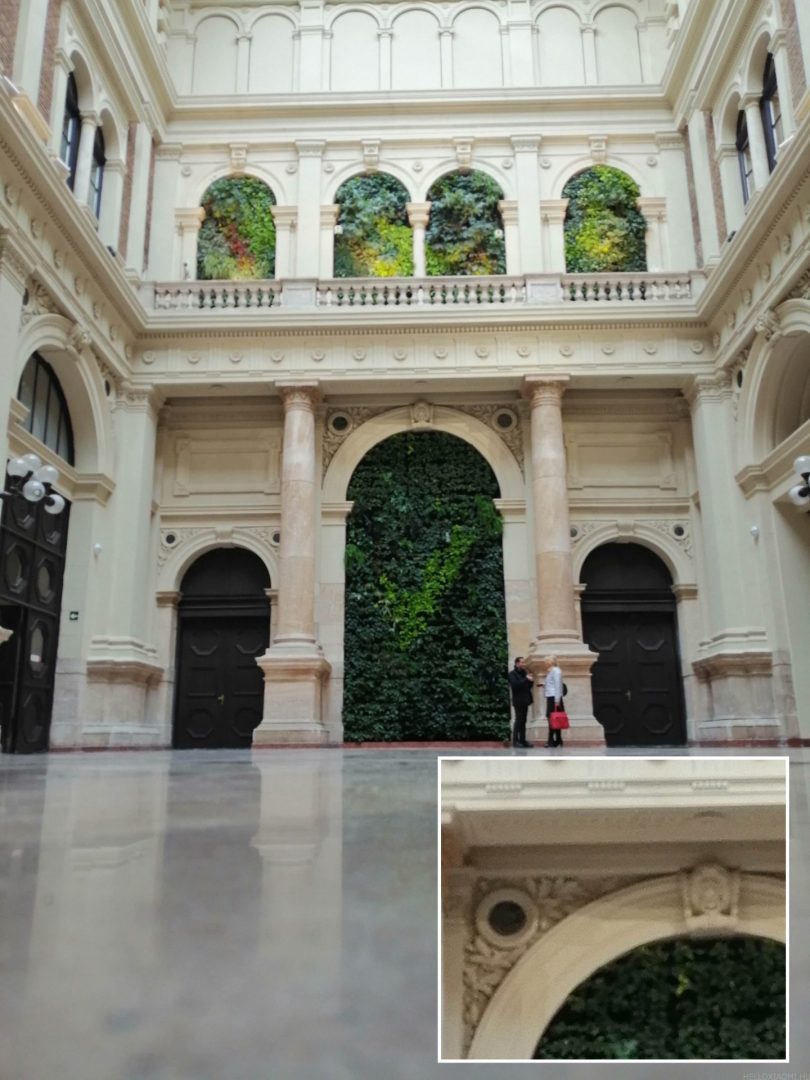
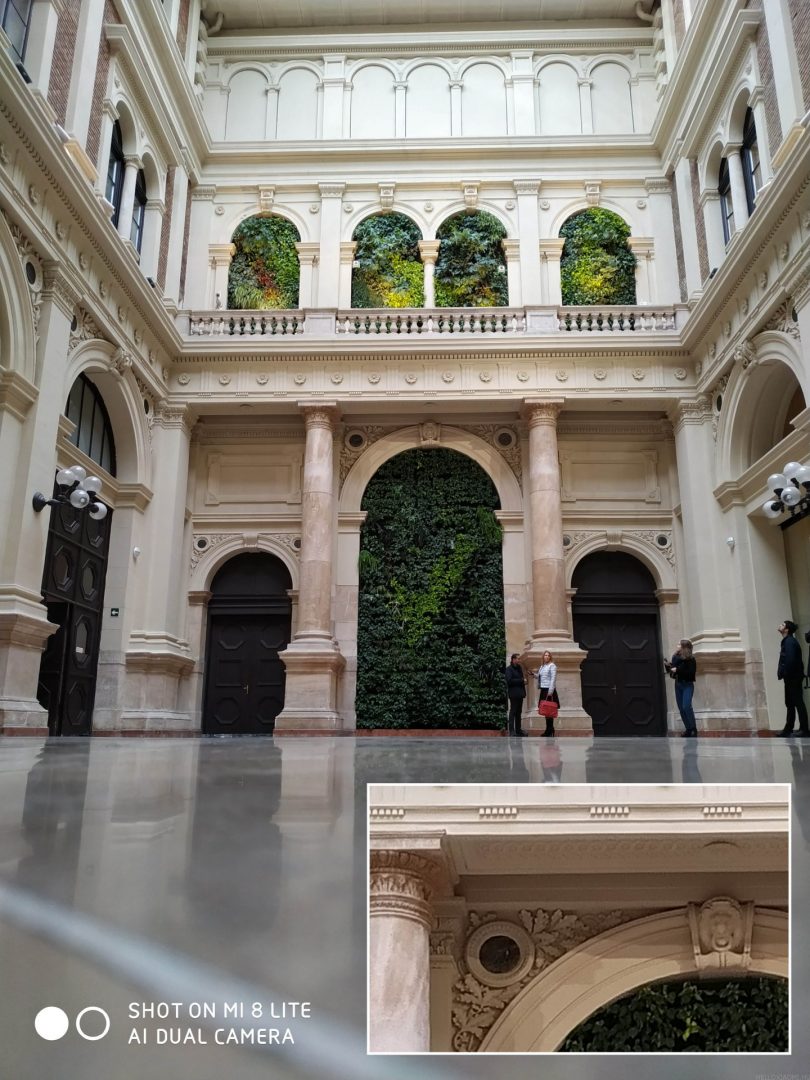
5x magnification
[twenty20 img1="16833″ img2="16837″ offset="0.5″ before="Redmi Note 7″ after="Huawei P smart 2019″]
[twenty20 img1="16833″ img2="16841″ offset="0.5″ before="Redmi Note 7″ after="Mi 8 Lite"]
[twenty20 img1="16846″ img2="16850″ offset="0.5″ before="Redmi Note 7″ after="P smart 2019″]
[twenty20 img1="16846″ img2="16854″ offset="0.5″ before="Redmi Note 7″ after="Mi 8 Lite"]
[twenty20 img1="16870″ img2="16874″ offset="0.5″ before="Redmi Note 7″ after="P smart 2019″]
[twenty20 img1="16870″ img2="16878″ offset="0.5″ before="Redmi Note 7″ after="Mi 8 Lite"]
Panorama
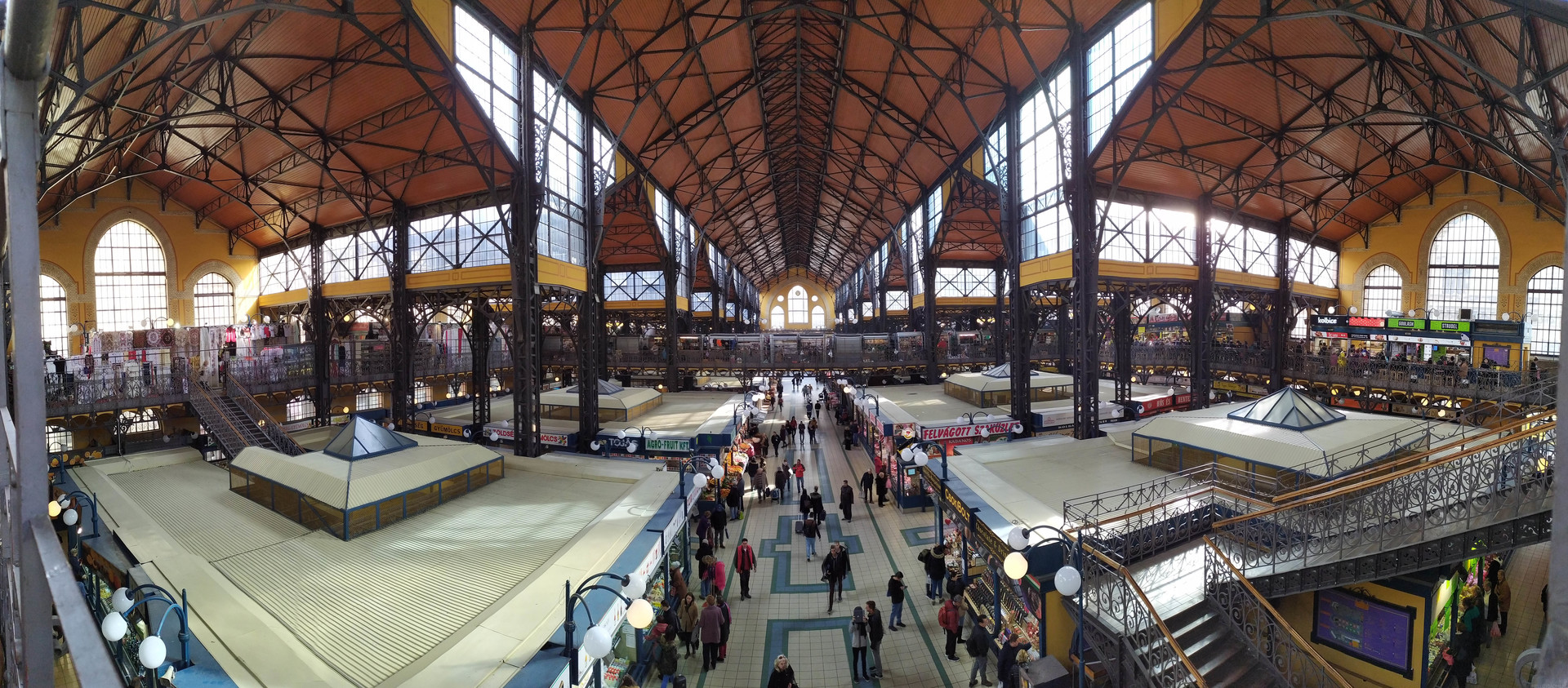
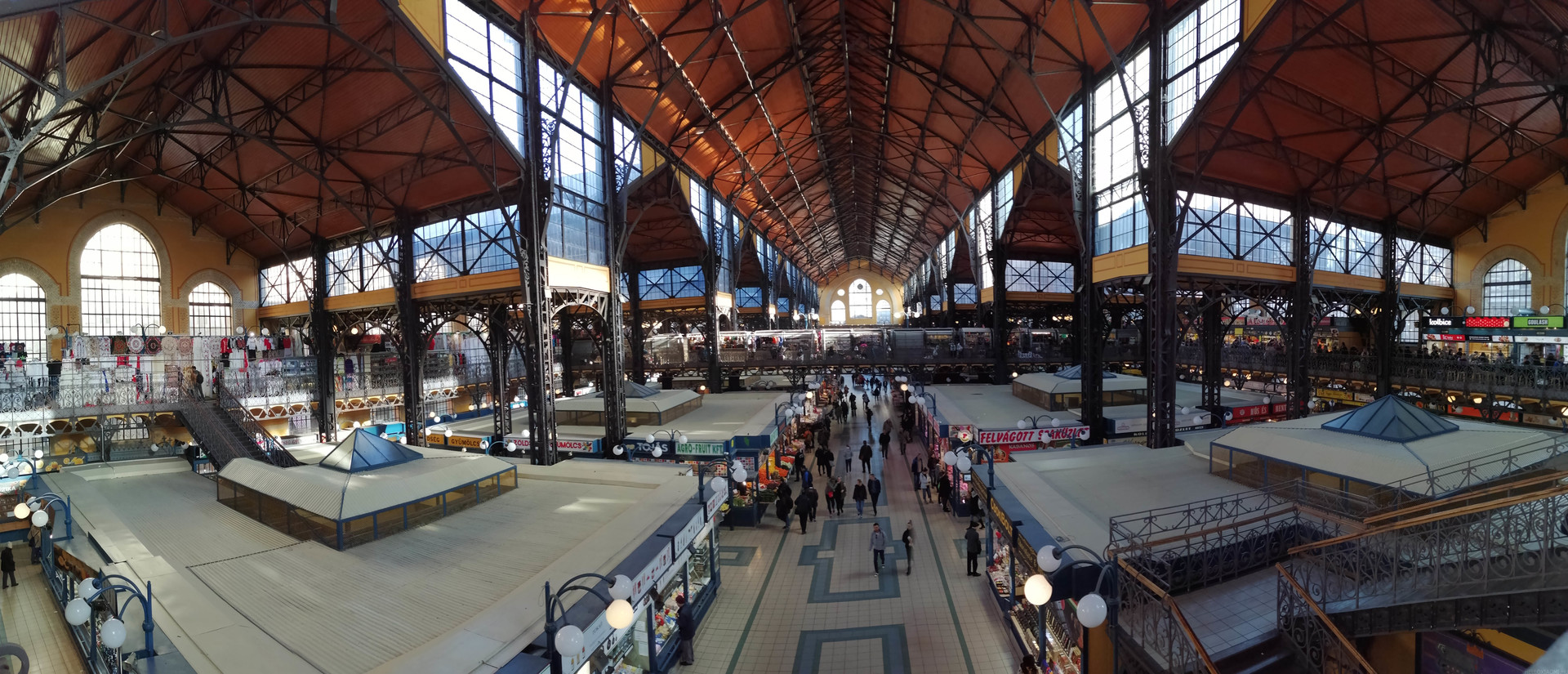
Unfortunately, the Mi 8 Lite's panorama is zoomed in and out.
Evaluation:
We have tried to look at the capabilities of the cameras and algorithms under less than ideal conditions. It's easy to see that with Xiaomi phones - especially the Note 7 - the purple colour is dominant (false white balance), with higher line sharpness, contrast and dynamics. The Huawei P smart 2019 produces a more yellowish, duller colour. AI is a big help on all devices, as is night mode on the Redmi Note 7. The AI saves the P smart 2019 from getting bogged down in most situations. There's a difference in decent lighting conditions, but even in low-lit spaces, the image quality varies. While in most cases the Mi 8 Lite's lead is undisputed, the Redmi Note 7 did better in several shots.
The Redmi Note 7's algorithm should improve white balance misalignment and Portrait mode accuracy, and take back the linearity. The Mi 8 Lite is about as good as it gets, the video sound should be significantly improved.
The Huawei P smart 2019's most noticeable saving is in the camera. A good lens and AI try to take a decent picture even in low light, but the presumably OmniVision or Samsung sensor limits usability. In video, 4K was unnecessary to include, just as more emphasis should have been placed on intelligent face recognition instead of AR modes.
The Redmi Note 7 is better, but the savings, or rather compromises, are reflected in the camera. It's not a bad product, but the Samsung ISOCELL sensor is still inferior to Sony's real 48MP version.
Summary
It can be seen that manufacturers are trying to balance the price/value frontier.
The Huawei P smart 2019 with the plastic back, the noname camera unit and the microUSB connector, it has managed to keep the price affordable. In return, we get NFC, an eye-friendly display, an ergonomic design with a light weight, and a system packed with all the extras.
Leaving the camera aside, I still have a problem with the strict application management, as others will probably confirm.
That said, I'm not surprised that Huawei is where it is today. They have huge financial resources in R&D and they are using them hard. One of the best decisions they made years ago was to sign a contract with Leica (a long-established photographic technology manufacturer). The collaboration worked out well for both sides, and Huawei's wagon was also hitched at the time. My favourite design is still the P6, it was really unique. It's harder to keep up with today's trends, but they are cleverly juggling between still reasonable solutions and designs. They don't risk as much as would jeopardise the company's financial results or push them over the edge like HTC. Sony, LG, Asus are slowly being squeezed out of the market, but the star of Apple or even Samsung is no longer shining as brightly as it did a few years ago. Huawei is now as prestigious a brand in some markets as Samsung or Apple once were. But Xiaomi can't complain either, they can maintain their fourth place with a much smaller budget. All this while in Europe they have been around for 2 years (really started expanding in 2018), and in the US only a few of their smart home products are officially available.
The Huawei P smart 2019 is a worthy opponent to the Redmi Note 7, or vice versa :)
The current price of 70e HUF, and the 0 HUF carrier options are bringing the sales figures nicely, not by chance, since Honor is also there to back it up.
What do I predict for Huawei?
If they keep this up, they will overtake Samsung and Apple in a few years. If you only look at the "P" and Mate series Pro models of the last 2 years, it's a very capable offering, even if the price tag is quite steep.
But let's not forget Xiaomi. From the Mi 8 / Mi MIX 2s models onwards, they've cracked up nicely on the camera front, like ground water. And the Mi 9 has nicely squeezed the then current top, P20 Pro / Mate 20 Pro models, and even still leads on the video front. Overtaking the Samsung S10, and the P30 Pro. Yes, you can see that from the scores it got in DxOMark tests.
The Redmi Note 7 the manufacturer has packed in everything you'd expect from the first child of a new, distinct brand. The plastic frame provides sufficient rigidity, but is more susceptible to scratches, in exchange for flexibility, protecting the display from stress when dropped. The glass back gives a quality feel, its slipperiness compensated by the silicone case included. The huge display size is somewhat compensated by the full display design, but it still has the most generous height. The Note's Note-ness is challenged by the Redmi 7's equally large physical size. Since Redmi 7A is not expected, we can't expect a Redmi model with a display size below 6″ this year, apart from the quirky Redmi Go.
The 18W fast charge is definitely welcome, you just need to get the charging head to provide it. A USB-C connector is definitely timely, although the Redmi 7 will stick with the good old microUSB solution.
According to Mi 8 Lite is still a good bargain, but the Redmi Note 7 is a strong contender with its larger battery, 3.5mm jack, infraport and lower price tag.
The Redmi Note 7 and Mi 8 Lite are available from xiaomishop.hu-and the Huawei P smart 2019 to Huawei Technologies Hungary.

















